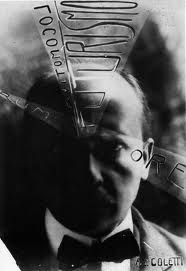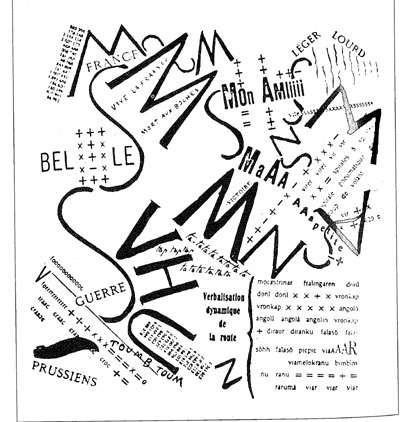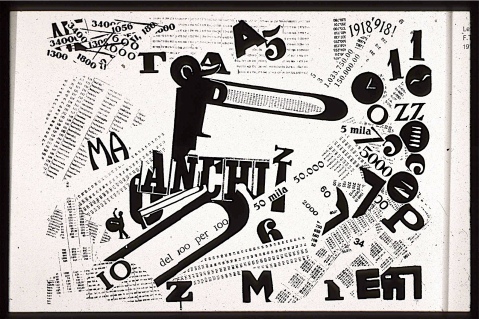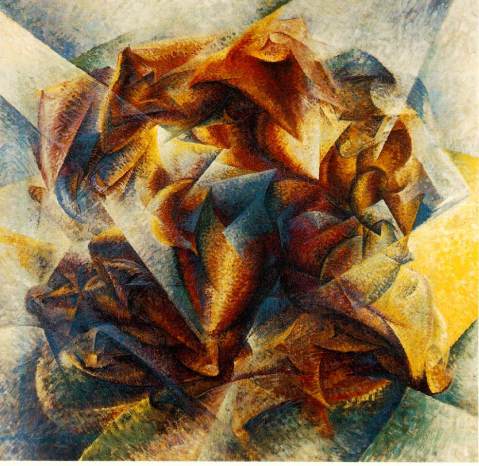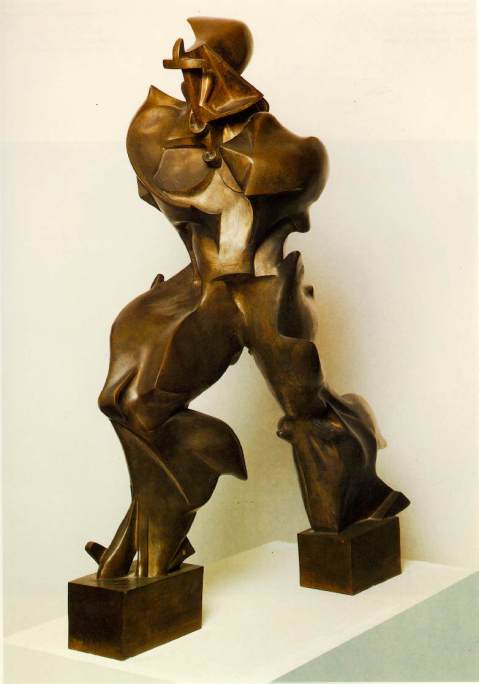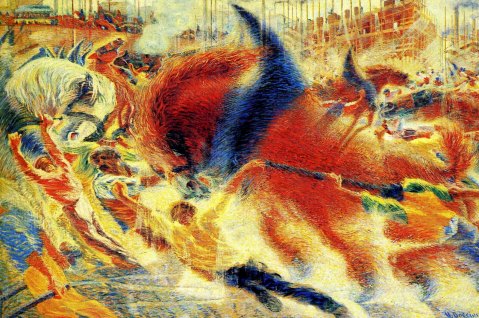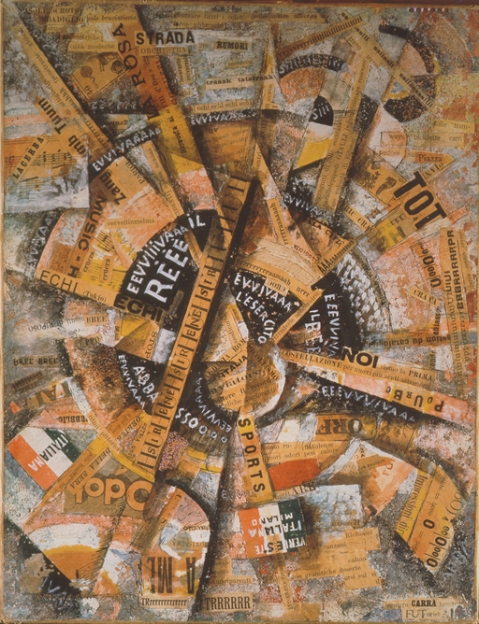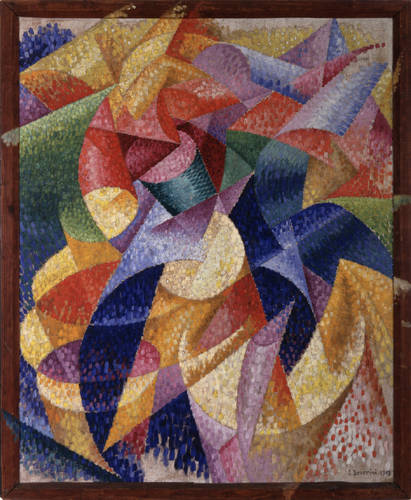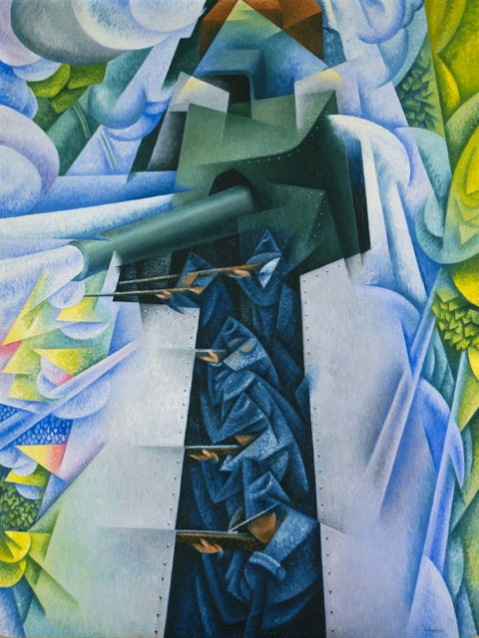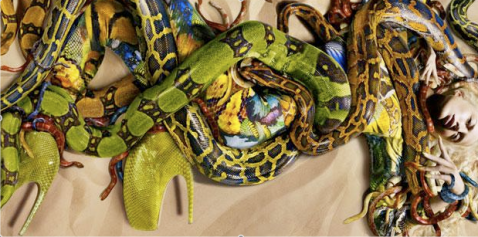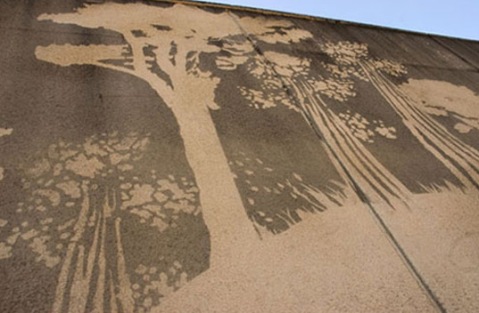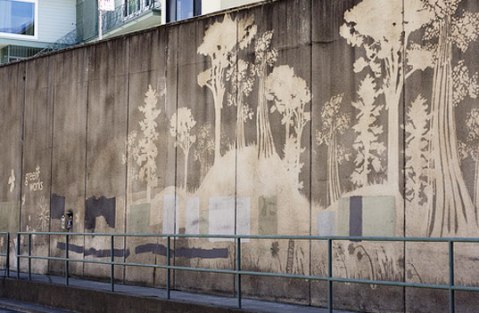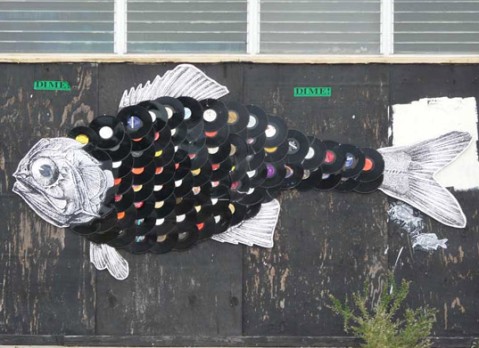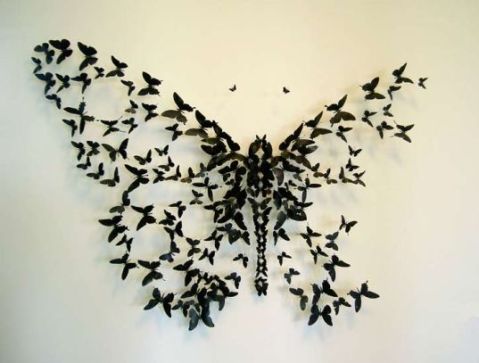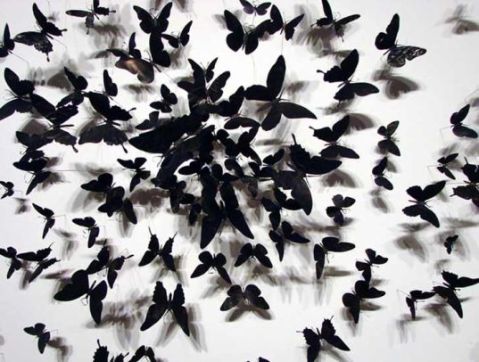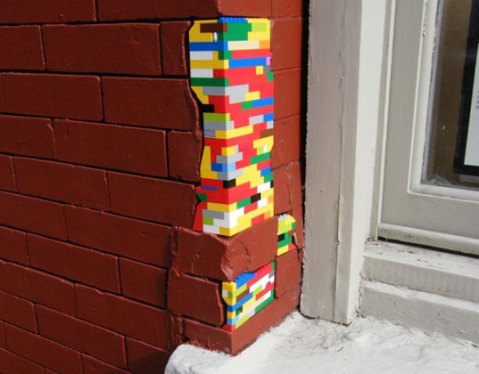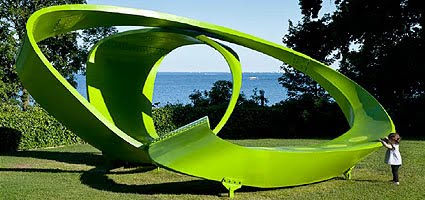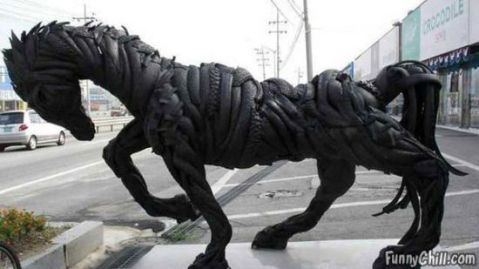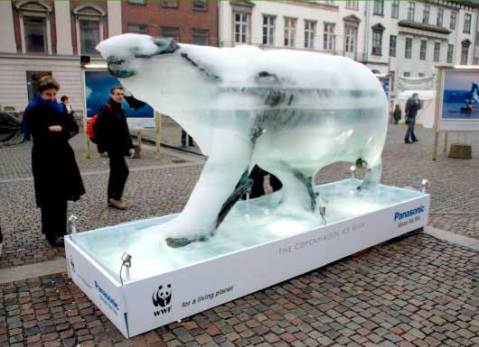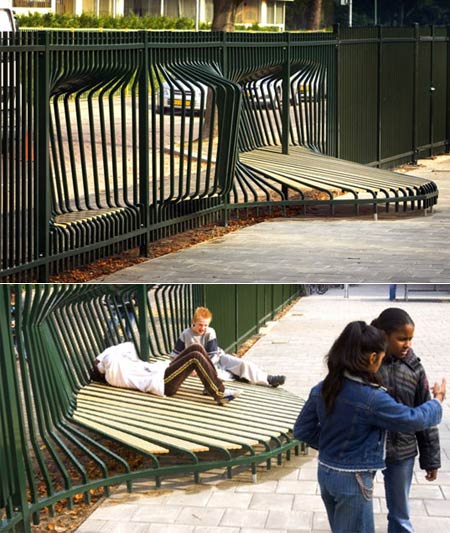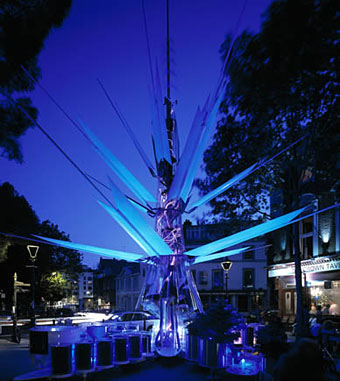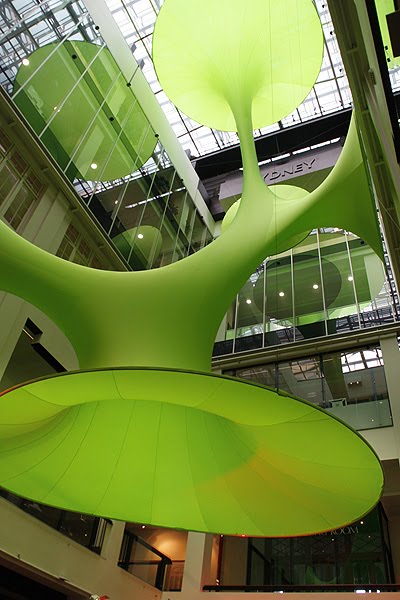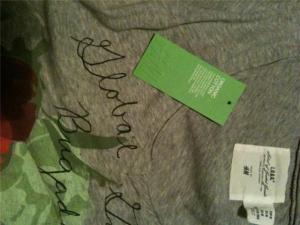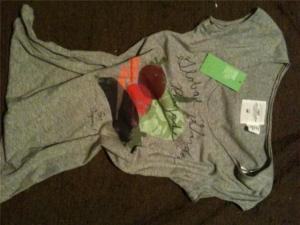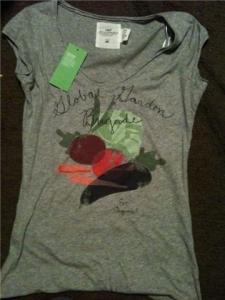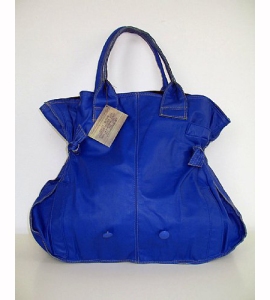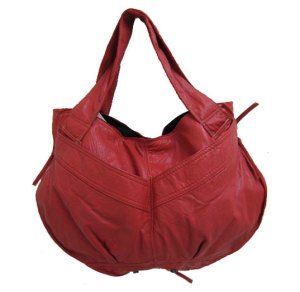The Futurist Manifesto
- We intend to sing the love of danger, the habit of energy and fearlessness.
- Courage, audacity, and revolt will be essential elements of our poetry.
- Up to now literature has exalted a pensive immobility, ecstasy, and sleep. We intend to exalt aggresive action, a feverish insomnia, the racer’s stride, the mortal leap, the punch and the slap.
- We affirm that the world’s magnificence has been enriched by a new beauty: the beauty of speed. A racing car whose hood is adorned with great pipes, like serpents of explosive breath—a roaring car that seems to ride on grapeshot is more beautiful than the Victory of Samothrace.
- We want to hymn the man at the wheel, who hurls the lance of his spirit across the Earth, along the circle of its orbit.
- The poet must spend himself with ardor, splendor, and generosity, to swell the enthusiastic fervor of the primordial elements.
- Except in struggle, there is no more beauty. No work without an aggressive character can be a masterpiece. Poetry must be conceived as a violent attack on unknown forces, to reduce and prostrate them before man.
- We stand on the last promontory of the centuries!… Why should we look back, when what we want is to break down the mysterious doors of the Impossible? Time and Space died yesterday. We already live in the absolute, because we have created eternal, omnipresent speed.
- We will glorify war—the world’s only hygiene—militarism, patriotism, the destructive gesture of freedom-bringers, beautiful ideas worth dying for, and scorn for woman.
- We will destroy the museums, libraries, academies of every kind, will fight moralism, feminism, every opportunistic or utilitarian cowardice.
- We will sing of great crowds excited by work, by pleasure, and by riot; we will sing of the multicolored, polyphonic tides of revolution in the modern capitals; we will sing of the vibrant nightly fervor of arsenals and shipyards blazing with violent electric moons; greedy railway stations that devour smoke-plumed serpents; factories hung on clouds by the crooked lines of their smoke; bridges that stride the rivers like giant gymnasts, flashing in the sun with a glitter of knives; adventurous steamers that sniff the horizon; deep-chested locomotives whose wheels paw the tracks like the hooves of enormous steel horses bridled by tubing; and the sleek flight of planes whose propellers chatter in the wind like banners and seem to cheer like an enthusiastic crowd.
F.T. Marinetti (Paris) Le Figaro, February 20, 1909
Marinetti began the “futurist manifesto” with stating “we intend to sing the love of danger, the habit of energy and fearlessness” summing up the futurist principles, the love of speed, technology and violence and above all the evolvement of the machine!! The industrial age fuelling their stance and allowing the opportunity to aid Marinetties revolutionary purpose. The invention of the car, the plane the whole triumph of man over nature. The aim was to introduce less fear in design, a time to embrace change and to try something new. “why should we look back, when what we want is to break down the mysterious doors of the impossible” (Marinetti 1909) The futurists chose to embrace modernisation, the noise and fast moving cities “the racers stride, the mortal leap” Society is now to be enriched by the beauty of speed and the hustle and bustle of fast paced life that we now all know too well. Rather than some fiercely attacking modern life and technology while still allowing themselves to enjoy the comforts and benefits that they bring. However as the need for speed and efficiency became a way of life can lead to closed minds, impatience and a life of laziness.
The tone of the futurists is aggressive although some say Marinetti took fascist roots so this may not come as surprising as Armstrong (2009, 43) states “ he was a nationalistic fascist so his tone can be off-putting” as well as stating that Marinetti is “clearly an unlikeable figure but his embrace of the industrial age and his printing press to spread powerful messages to the masses have served as a model for all who wish to influence the populace since” The futurists successfully achieved this by utilizing public anger and outrage toward the modern movement in order to arouse controversy and wide spread attention to their own values. To ‘swell the enthusiastic fervor of the primordial elements”
“We will destroy museums, libraries, academies, we will fight moralism, feminism, every opportunistic or utilitarian cowardice” (Marinetti 1909) destruction of the museums and artworks would mean the removal of history from modern day life. No art history would mean no inspiration. Art deserves remembrance we shouldn’t simply move with the times and forget the past. New art is needed to move with society. You simply could not make new art without having the history of art to source for inspiration, for research and above all for enjoyment.
The introduction of the machine to society lead to futurists beginning to use harsh dynamic lines into their artwork.
Après la Marne: This typographic piece illustrates the poem that celebrates the battle of the marne in which allies defeat Germany and established the Western front. Marinetti’s layout portrays the style of a military map. The poem “portrays General Joseph Joffre’s victorious tour of the troops after battle”(www.getty.edu)
Tumultuous Assembly: Another visual poem designed to replicate world war I breaking out in Europe to capture the modern day battlefield that the futurists greeted as “crystallization of their ambitions, indeed, as the ideal expression of their cult of violence, energy and machines” (www.getty.edu) The piece looks chaotic paired with the man made sounds situated n the piece is like the emotions of war spread all over the page, suggesting a fearful negative enviroment. “The sheets of numbers evoke gatehred crowds, or the dead and missing, the latter suggested by the black clocklike shapes” Although some argue “at right, seems an abstract compostion of numbers, words and shapes, some elements suggest a celebration after world war I” (www.getty.edu)
Manifesto of the Futurist Painters (1910) Umberto Boccioni, Carlo Carra, Luigi Russolo, Giacomo Balla, Gino Severini (www.wired.com)
With our enthusiastic adherence to Futurism, we will:
- Destroy the cult of the past, the obsession with the ancients, pedantry and academic formalism.
- Totally invalidate all kinds of imitation.
- Elevate all attempts at originality, however daring, however violent.
- Bear bravely and proudly the smear of “madness” with which they try to gag all innovators.
- Regard art critics as useless and dangerous.
- Rebel against the tyranny of words: “Harmony” and “good taste” and other loose expressions which can be used to destroy the works of Rembrandt, Goya, Rodin…
- Sweep the whole field of art clean of all themes and subjects which have been used in the past.
- Support and glory in our day-to-day world, a world which is going to be continually and splendidly transformed by victorious Science.
- The dead shall be buried in the earth’s deepest bowels! The threshold of the future will be swept free of mummies! Make room for youth, for violence, for daring
Umberto Boccioni: Dynamism of a soccer player
One of a long series of artwork of the figure in motion.“In this work a soccer player dematerializes into a luminous and flickering atmosphere, save for his firmly sculpted calf, at center.”(www.moma.org) Here Boccioni offered a demonstration of a principle he made apparent in the technical manifesto of futurist painting. “To paint a human figure you must not paint it; you must render the whole of its surrounding atmosphere . . . movement and light destroy the materiality of bodies.” Boccioni is successful in creating an atmosphere of youth and energy. This is achieved by the range of combined colours and the use of stippled brushwork.
Unique forms of Continuity in space
“Sculpture,” Boccioni insisted, “should bring to life the object by making visible its prolongation into space. The confining of the enclosed statue should be abolished. The figure must be opened up and fused in space.” The bulging abstract shapes represent the muscles of the figure forces as if “under the distorting pressures of supersonic speed” The sculpture depicts strength force and violence “never before had organic velocity and energy been so emphatically expressed” (http://serdar-hizil-art.com)
In previous work Bocionni is seen using small dots and dashes to create texture and movement in his paintings but in The City Rises, “he tore the divisionist veil of dots into ribbons of color somewhat as van Gogh, had done in 1889 with Seurat’s Neo-Impressionist technique.” (http://serdar-hizil-art.com) The energy of the painting is successfully communicated by these quick successive brush strokes, they show the busy movement of the straining men.
It is a scene of labours of men on a construction site utilising the power of horses to their advantage. Power dominates the piece as the strong horse is the central focus. The theme is the construction of new buildings as you can see the partially built building in the top right. You can boldly see and feel the strength and energy of the piece as the use of bold dramatic colours, the colours becoming darker wen situated on the central horse, featuring none of the lighter shades that are featured elsewhere “these shadows draw the viewers eye into the painting and their mind into action.” (Widley 2010) It Creates the feeling of aggression capturing the essence of futurism. “Compositionally this painting does come across as unbalanced and discordant which could be considered a metaphor for the industrial age therefore it does capture the essence of Futurism.” (Widley 2010)
Carlo Carra
The collage poem has been created to distinctly move outwards from the centre in fragments of circles creating sharp ray like lines coming out from the centre along with the featured words.This gives the impression of power from the centre almost like an explosion or loud noise and the outer is the ripple effect. The use of the darker colored fragments give a sense of depth and three dimension.
Lots Daughters 1915
By 1915 Carra began to break free on the futurist movement and began to paint in a more realist style after meeting painter Giogio de Chirico. For instance Lots Daughters attempts to capture stillness, a huge contrast to his earlier work. “Carrà and de Chirico called their new style Metaphysical painting” (www.britannica.com)
Gino severini
Sea = Dancer 1914
In this canvas you can see the movement of the sea within the curvaceous shapes. The use of dark and light tones allow for movement and a three dimensional effect. The dotted brush work creates movement. “The large curling planes are stippled with brilliant staccato dabs of paint that cause all surfaces to vibrate as if with light. (Barr 1936, 58)
Gino Severini has been said to be was the first of the futurists to come into contact with Cubism. Previous Cubism focused on a small number of objects, and “seldom cast its gaze on anything outside the painter’s studio”(http://blogs.smithsonianmag.com) The Futurists, on the other hand, were interested in the innovative life and inventions outside the studio, cars, trains and objects of modern life. Cubism now took new meaning rather than using fractured forms to analyse an object futurist used fragmentation to indicate “lines of force” to crate energy rather than a still object. Bold colour created the new style of cubism that was described as “drab in its coloration.” (http://blogs.smithsonianmag.com)
Armoured Train in Action 1915
Along with all futurists severini was obsessed by the mechanized war. You can see the five figures aiming gunfire in a linear pattern. Smoke from the canon is a solid strong shape, not so much casting a mask or smoke screen but swallowing the landscape within it the force. Futurists believed war could generate a new Italian identity one of military and cultural power.
Bibliography
Image sources
- http://www.ucd.ie/modernism/overview/p3.html
- http://ookaboo.com/o/pictures/picture/12871249/Après_la_Marne_Joffre_visita_le_front_en
- http://www.flickr.com/photos/laurapopdesign/3353688828
- http://www.twocoatsofpaint.com/2010/06/twitter-notes.html
- http://www.wright.edu/cola/Dept/eng/blakelock/rockweb2/rockpgs/R99/origindustrial2.htm
- http://theendofbeing.com/?attachment_id=11182
- http://collagemuseum.com/carra001.htm
- http://www.artline.ro/Carlo_Carra-19845-2-n.html
- http://www.midcenturia.com/2011/09/works-of-gino-severini.html
Text sources
- Alfred H. Barr, Jr., Cubism and Abstract Art (New York: Museum of Modern Art, 1936), p. 58.
- Helen Armstrong, Graphic Design Theory: Readings from the field, New York, Princeton architectual press 2009
Online sources
- http://www.getty.edu/art/exhibitions/tumultuous/ (Accessed 12/1/13)
- Bruce Sterling, November 11, 2008 http://www.wired.com/beyond_the_beyond/2008/11/manifesto-of-th (accessed 20/1/13)
- http://www.moma.org/collection/object.php?object_id=80009 (accessed 20/1/13)
- http://www.britannica.com/EBchecked/topic/96840/Carlo-Carra (accessed 20/1/13)
- http://blogs.smithsonianmag.com/art/2012/04/futurism-is-still-influential-despite-its-dark-side/#ixzz2IcHAAGwQ (accessed 20/1/13)
- http://serdar-hizli-art.com/modern_art_masters/manifesto_of_the_futurist_painters.htm ( accessed 21/1/13)
- J Widly, Sep 1, 2010, article: Futurism and umberto boccionis the city rises. Can b found at (http://suite101.com/article/futurism-and-umberto-boccionis-the-city-rises/) ( accessed 21/1/13)
A few thoughts…..
Are there any borders and boundaries?? in terms of factors such as the use of a range of medias. stretching across a long spectrum of disciplines. Is it possible to create a design that uses all forms of medias thus proving that there don’t have to be boundaries.
I think it is fair to say that good design will always push boundaries whether these be ethical or moral etc. In my opinion i think a designer has to push the borders and boundaries in order to get their message across strong and clear. Good design is made good by provoking a reaction. A good example of this may be an outrageous or odd advertising campaign. The observer may be confused or even not agree with it but it provokes a reaction therefore it has worked and served its purpose.
This for example is an advertising campaign for Alexander McQueen’s SS 2010 python armadillo shoes that are over a foot tall. This ad is pretty outrageous in its own right, a model covered in snakes. The image screams edgy and alive design and the huge range of bright colours is extremely appealing to the eye. These shoes have had no where near a lack of media coverage since this campaign was released mainly because i think it challenges the norm and most definitely pushes the boundaries of design.
Reverse Graffiti
Graffiti is one of the most controversial art forms out there since it defaces public property. Well a group of students from Durban, South Africa have a different outlook on the popular art form. What if graffiti artists actually cleaned up the walls by etching their sketches into the grime that already exists on them. They named this process, reverse .
I think that this is an amazing innovation to street art. It’s so dramatic and although graffiti has real attitude and personality i think this is a real strong competitor. Everyone notices street art what a great form of advertising this would be with no harm to the enviroment at all. This definitely has appeal. Is it the role of the designer to challenge traditional methods art for new contemporary ways.
some more sustainable art…
Just a few more things I came across on a website that i really like.
Some old vinyl records and combined them with wheat paste graffiti to create a new kind of urban fossil.
Paul Vilinski has rescued crushed beer cans from the streets of New York and turned them into a montage of flying butterflies. He took advantage of the nice arc that a beer can has and carefully cuts each to create each butterfly. I love the shadow the butterflies create on the clean white wall.
These colourful toys are actually being used as real life building blocks. Artist Jan Vormann took a team of volunteers across Brooklyn and Manhattan as part of the VOLTA art show to fill in the blanks with the building blocks of our childhood.
I love all of these eco-friendly sustainable sculptures. It’s really got me interested in sculpture i think i would like to pursue this idea further. I think that if you are trying to communicate an important message big is better, get recognised, get heard!
source: http://inhabitat.com/art/
Just a few things……
The Pavillion
This sculpture is made of natural materials and was on display for the 2009 UN Climate Conference in Copenhagen and received a JEC Innovation Award for showing cutting edge possibilities of using sustainable and intelligent materials in design. The artwork was created by 3XN architects together with StageOne Freeform Composite, Skykon and COWI.
“We believe the future is with new materials that require less energy to produce than aluminium or concrete. And now we hope that the knowledge gained from the project can be used in other applications, and possibly in other industries.” Kim Herforth Nielsen, founder of 3XN
“It is fascinating to think that, with the right materials, human activity can be converted into useable energy, just as when kids playing on the pavilion illuminate its integrated LED lights. The pavilion has made it possible for us to demonstrate how sustainable and intelligent materials can be used as construction materials.” COWI R&D Director Bente Andersen.
A project like this offers new answers to environmental concerns often raised when using materials such as polyester, glass fibres,concrete etc. There is a growing need for the composite industry to find answers to energy consumption during production and to the recycling process. this project offers an environmentally friendly solution. This project promotes innovation if designers can produce amazing sculptures like this with eco-friendly materials for the same price shouldnt we all be considering this!!!
Tyre Horse Sculpture by Jeff koons.
This sculpture is made purely from recycled tyres. I thought i would put this on because i think it looks awesome, it would definitely stop me in the street.
Mark Coreth’s polar bear
The Ice Bear Project create sculptures that inspire audiences everywhere to make a connection with the Arctic. They are life size polar bears in ice with a bronze skeleton. As the public are encouraged to touch the sculpture, their actions impact by warming the ice and the polar bear melts to its metal skeleton on a shrinking iceberg.
I think this idea is extremely innovative in ways that the audience can get involved with the art and its environmental messages it stands for. This is definitely breaching the boundaries this is a piece of art that people can interact with and that they can change and have an impact on. I love this idea it is definitely more thought provoking than that of a boring poster that probably wouldn’t get noticed. How could you not notice this. This particular image was one of the sculptures placed in Copenhagen outside the climate change summit last year.
http://www.icebearproject.org/
Masking more out of less it’s a seat a fence and a sculpture. Brilliant!!
London Oasis
London Oasis designed by architect Laurie Chetwood. The Oasis is a demonstration of sustainability and renewable energy working with architecture to provide a tranquil oasis for London. The 12 metre high structure mimics the design of a growing flower: its “petals” open and close in response to the sun and the moon utilising daylight to generate power. It also contains a hydrogen fuel cell and wind turbine to make it self-sufficient. It even uses rainwater it has collected for irrigation and cooling. Inside the petals, there are five “people pods,” which visitors pull down over their heads. Once enclosed, they can retreat from the busy streets to breathe clean, cooled air while relaxing to music and bird songs. The Oasis interacts with the environment around it. It senses time, the weather and people, and responds accordingly. At night, it uses energy stored during the day to power a beacon in the form of a light show which responds to the movement of people around.
Again this is another piece of art that its “visitors” can interact with and can use guilt free knowing that its self efficient and not creating any harm to the enviroment. Perhaps it is the role of the designer to create design that people can use or enjoy with feeling no guilt for the enviroment.
http://www.msnbc.msn.com/id/13436983/
The Green Sculpture
Architects from LAVA thought up this installation in a five floor shopping centre in Sydney. The sculpture is 20 metres in height and consists of easy fabric tense on an aluminium basis. The main reason I liked this piece is the fact that it utilises the space provided with minimal wastage its definitely a big statement.
Richard Long
Richard Long makes nature the subject of his work, but in new different way. He works outside using natural materials like grass and water which then evolved into the idea of making a sculpture by walking. Walking itself has its own cultural history, from Pilgrims to contemporary long-distance walkers.
Longs first work made by walking, in 1967, was a straight line in a grass field, which was his own path, going ‘nowhere’. Longs intention was to make a new art which was also a new way of walking: walking as art. Each walk followed his own unique route. Each walk stood for a particular idea. Thus walking as art provided an ideal means to explore relationships between time, distance, geography and measurement. Long records his in three ways: in maps, photographs or text works. All these forms feed the imagination, they are the distillation of experience.
Walking also enables Long to extend the boundaries of sculpture. Sculpture could now be about place as well as material and form. His landscape sculptures are on two ends of the spectrum they may be a built monument of natural material or simply leaving only footprints in the landscape. Stones from his walks can be used as markers of time or distance, or exist as parts of a huge sculptures. On a mountain walk a sculpture could be made above the clouds, perhaps in a remote region, bringing an imaginative freedom about how, or where, art can be made in the world.


Richards Longs work is not only a form of sustainable design in the sense that it does not harm the enviroment. He may tread down some grass photograph it and then the area is left to return to its natural state once again. But also Longs work defeats borders and boundaries. Who says that art belongs on paper or on a canvas on a wall in a gallery instead Long will create his installations out in the natural enviroment with the freedom of space around the art as opposed to a confined piece of paper. Long has a new contemporary outlook on art and i think its brilliant he has now boundaries his works are mainly spontaneous which is probably what makes them so thought-provoking.
As a designer do we have the role to create art in a new space, make people view art in a new way. The enviroment itself is art perhaps we should just sit back and enjoy that for a while.
350.org
350.org is an international campaign dedicated to building a movement to unite the world around solutions to the climate crisis. The campaign is designed to create a new sense of urgency. Why 350? Scientists say that 350 parts per million of CO2 in the atmosphere is the safe limit for humanity whereas we are at 387 ppm.
The 350 mission was introduced with the animation below which as there are more than 4000 languages spoken around the world, words don’t always get the point across. I come across this animation on a random site and thought it was brilliant. It caught my eye and it wouldn’t matter what language which in my eyes makes it a successful piece of design with regards to their aim. It also reminded me of work i have been doing recently with isotypes.
Is it the designers role to be universal?
Recycled fabrics
An interesting example of reuse of recycled fabrics is that of Ashley Watson. She makes eco-friendly hand bags made from recycled leather that she finds in charity shops. This may be a great idea for creating less waste and the reuse of materials BUT some people feel it promotes the killing of animals, because it is still leather.
Is it ok for an environmentalist to wear leather even if it is recycled?? This is a product that sits on the fence between being environmentally friendly and NOT being environmentally friendly. It was once an animal killed to make a jacket but now risks being chucked into landfill so is it best to reuse and recycle?
With this issue im afraid im still on the fence. I do not agree with the killing of animals for clothes because it is not needed whatsoever. Yet if it is happening anyway this recycling method of the leather seems a perfect way to protect the enviroment from any further damage us humans create. As a designer it is our job to come up with a solution to a problem in this case the waste of leather and I do think its a successful solution although I would definitely prefer if the leather wasnt there to be reused in the first place.
Here are a couple of pics of Ashley Watsons bags. ( I especially like the features she maintains in the bags like buttons, zips and pockets.)
Fashion and Fabrics
The fashion industry possibly one of the biggest industries that could make a world-wide impact with its products. When it comes to purchasing in the ever growing fashion market place it is up to the consumer to put their money into eco-friendly companies who put the environment first. Aswell a this it is also up to the designer to encourage and persuade the consumer to buy the products else the environmentally friendly design idea will NOT succeed.
So what makes a fabric eco-friendly?? Eco-friendly essentially means “treading lightly” on the earth. There are three main factors that make a fabric eco-friendly: 1. The renewability of the product, the resource need to be renewed effectively in a short space of time. 2. The ecological footprint of the product, therefore how much land is used and needed to bring the plant to full growth and to support it. 3. The eco friendliness of the product therefore how much chemicals and pesticides are required in the growth and process of the plant before ready to sell.
Environmentally friendly companies usually also care about other factors such as: fair-trade labor NO SWEATSHOPS, sustainable goods in the sense that products made locally in order to use less fuel, animal cruelty NO LEATHER AND FUR and finally making sure the product is recyclable or even made from recycled goods.
Hemp 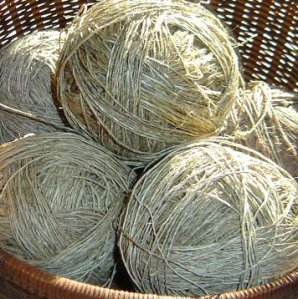 Hemp fabric has the most potential to be eco-friendly for a number of reasons. It’s ecological footprint in considerably smaller than that of others. It also doesn’t require pesticides to grow, along with requiring no irrigation as it can survive on the amount of water in the average rainfall. Hemp has long fibres which makes it suitable for spinning with minimum processing. These long fibres are long-lasting which makes it incredibly durable and therefore wears extremely well. Hence less need to shortly throw away into landfill after purchasing. www.recycledsilk.com/hempnettle.html
Hemp fabric has the most potential to be eco-friendly for a number of reasons. It’s ecological footprint in considerably smaller than that of others. It also doesn’t require pesticides to grow, along with requiring no irrigation as it can survive on the amount of water in the average rainfall. Hemp has long fibres which makes it suitable for spinning with minimum processing. These long fibres are long-lasting which makes it incredibly durable and therefore wears extremely well. Hence less need to shortly throw away into landfill after purchasing. www.recycledsilk.com/hempnettle.html
Bamboo is a highly renewable grass, and it is probably this property that has resulted in its being classified as “eco-friendly”. It also has natural antibacterial properties and the fabric “breathes”. The resultant cloth is biodegradable
Recycled and vintage fabrics
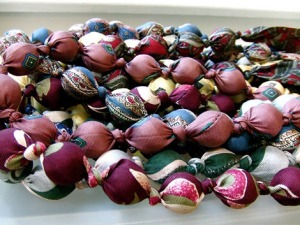 Recycled fabric is great because it goes back into the market instead of ending up at a landfill. I feel this is a brilliant way to not waste fabric. Vintage fabrics are awesome and this method is definitely becoming more popular now in young people. Mainly because you don’t have to lose style but just gain more. Within fashion this is on the rise and becoming a new way of dressing. Creating your own statement with recycled fabric, everyone can essentially be the designer. I love it!!
Recycled fabric is great because it goes back into the market instead of ending up at a landfill. I feel this is a brilliant way to not waste fabric. Vintage fabrics are awesome and this method is definitely becoming more popular now in young people. Mainly because you don’t have to lose style but just gain more. Within fashion this is on the rise and becoming a new way of dressing. Creating your own statement with recycled fabric, everyone can essentially be the designer. I love it!!
Organic cotton
Anything created organically (without the use of chemicals like pesticides or herbicides) is always a winner. Organic cotton falls nicely into this category.
I especially think its important that consumers wise up to the issue belonging to fashion and fabrics. It is a huge factor in most peoples lives. A small change for some of the clothing you purchase to be environmentally friendly could make a huge difference to the enviroment. Now it is the designers job to design clothing that is appealing to the consumer using these eco-friendly methods.
